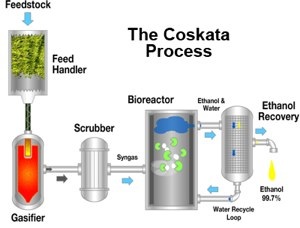BIOCOMBUSTIBLES + ACEITE DE OLIVA
Bogaris se transforma en mayor productor de aceite de oliva en Chile
Natalia Saavedra M.DF
Cuando en 2007 los productores de aceite de oliva a granel de origen español Bogaris (ex Detea) anunciaron su llegada a Chile con un proyecto que contemplaba la compra de 5.000 hectáreas para producir en el país, algunos operadores del mercado observaron con cierta incredulidad dicha iniciativa.
Sin embargo, el grupo avanza firme hacia el cumplimiento de su objetivo, pues a las 1.000 hectáreas (há) que poseen en Colchagua, sumarán un nuevo paño de 1.500 há en el norte del país, compra que se enmarca en la segunda etapa de inversión del proyecto, que involucra recursos por US$ 36 millones.
Según explicó el gerente general de Bogaris, Hugo Regojo, estos recursos se destinarán a la compra del terreno y a la construcción de una segunda fábrica de aceite, que se sumará a la planta que ya poseen en Colchagua.
Por ahora, en la empresa afinan los detalles de la compra del paño, pues están decidiendo la adquisición entre dos alternativas de terrenos de iguales dimensiones: uno ubicado en la IV Región y otro en la III Región.
El ejecutivo precisó que cuando el proyecto alcance las 5.000 há, se habrán invertido sobre US$ 100 millones.
"Dentro de Chile, Bogaris Agriculture se encuentra entre los cuatro proyectos más grandes del país. Si a esto le sumamos el proyecto nortino en carpeta, se transforma en el operador más grande de Chile (en aceite de oliva)", precisó Regojo. Esto, ya que con la compra quedará a la par de los proyectos más importantes del país como los de los empresarios Alfonso Swett y Clemente Eblen.
Inversión en energía
Sin embargo, esta no constituye la única inversión que Bogaris, realizaría en Chile.
La compañía, indicó Regojo, también podría iniciar operaciones en el negocio energético en Chile, ya que se encuentran estudiando la opción de desarrollar un proyecto de producción de biodiésel.
La iniciativa involucraría una inversión estimada de US$ 30 millones para la construcción de una planta en el sur del país, mientras que el combustible que elaboraría esta operación se vendería a terceros que necesiten reducir sus emisiones de C02 y que exportan sus productos a mercados donde es valorada la producción limpia.
"La división de energía de Bogaris está en la fase final de estudio de un proyecto de biocombustibles para producir biodiésel a partir de un sistema de explotación sustentable del bosque nativo en el sur de Chile", agregó Regojo.
La decisión de inversión sobre esta iniciativa debería estar definida a fines de 2009.
Quién es Bogaris
Bogaris es una empresa hispana que posee tres áreas de negocios: energía y medio ambiente; agroindustria y el desarrollo inmobiliario de proyectos industriales, residenciales y comerciales.
La firma posee más de 4.000 hectáreas en Portugal, destinadas a la producción de aceite de oliva.
La compañía factura anualmente más de 100 millones de euros.
Fuente:DF
Difundan libremente este artículo
CONSULTEN, OPINEN , ESCRIBAN .
Saludos
Rodrigo González Fernández
Diplomado en "Responsabilidad Social Empresarial" de la ONU
Diplomado en "Gestión del Conocimiento" de la ONU






 From the 2008-09 "winter of our discontent"
From the 2008-09 "winter of our discontent"



